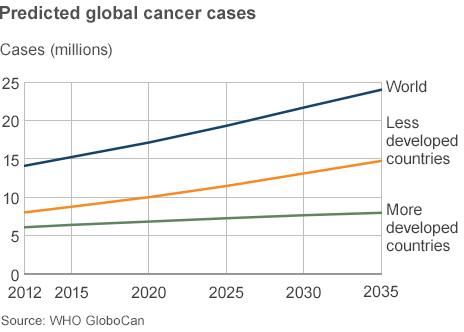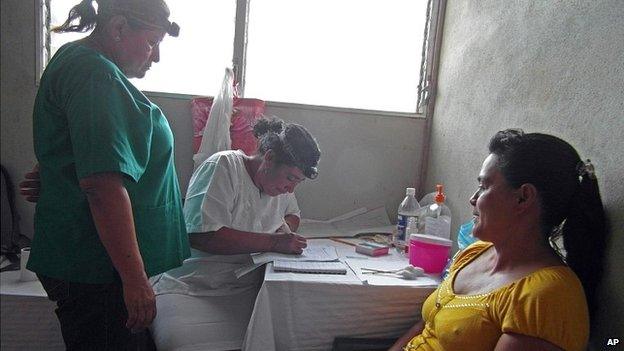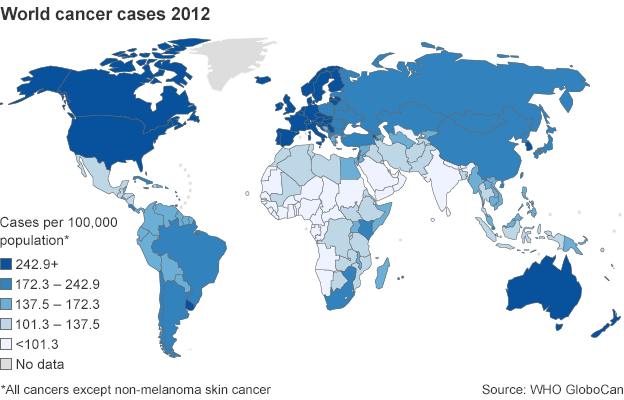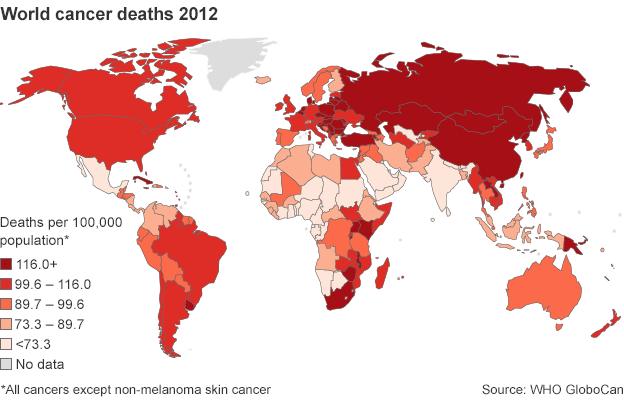Cancer: A global threat
- Published

Anti-smoking campaigns are key to efforts to tackle growing cancer rates in poor countries
The World Health Organization is warning of a global "tidal wave" of cancer and says that by 2035, around 24 million people will have the disease.

Why is cancer such a threat?
Globally, one in five men and one in six women will develop cancer before the age of 75.
And one in eight men, and one in twelve women, will die from the disease.
Cancer is the leading cause of economic loss through premature death and disability worldwide - because of the vast sums spent on treatment, but also in lost economic and social activity.
In 2010, WHO says the total annual economic cost of cancer was $1.16 trillion (£700bn).

Why is it still spreading?
Despite treatment advances and screening programmes to detect the disease earlier, the cancer burden will increase.
The world's population is growing and lifespan is increasing. This means there will be more and more people who can develop cancer.
Currently, 14 million people a year are diagnosed with cancer. WHO says that will increase to 19 million by 2025, 22 million by 2030 and 24 million by 2035.

Isn't cancer a 'rich world' disease?
While cancer is common in the Western world, more cases are seen in developing countries and it is these nations that will see the biggest rise in the future.

More than 60% of the world's total cases occur in Africa, Asia and Central and South America.
And these regions account for about 70% of the world's cancer deaths - a situation that is made worse by the lack of early detection and access to treatment.

Annual figures include donations by private donors and governments for prevention and treatment. Spending by recipient countries not included. More than 90% of cancer funding is spent on anti-tobacco campaigns.

What is being done about it?

Funding to fight cancer in poor countries - for instance this screening programme in Nicaragua - is much less than for other diseases
Half of all cancers are avoidable.
Access to effective and affordable treatments is key to this, as is cancer prevention.
Experience from high-income countries shows that early diagnosis and treatment works, but that health promotion alone is insufficient.
Adequate legislation plays an important role in reducing exposure to the things that cause cancer, such as air pollution and tobacco smoke.

What can we do about it?
Experts say the good news is that we can all take straightforward steps to cut risk.
About 30% of cancer deaths are due to the five risks: obesity, low fruit-and-vegetable intake, lack of physical activity, tobacco use, alcohol use.
Smoking is the single most important risk factor for cancer causing over 20% of global cancer deaths and about 70% of global lung cancer deaths.
Cancer-causing viral infections such as HPV are responsible for up to a fifth of cancer deaths in low and middle-income countries.

